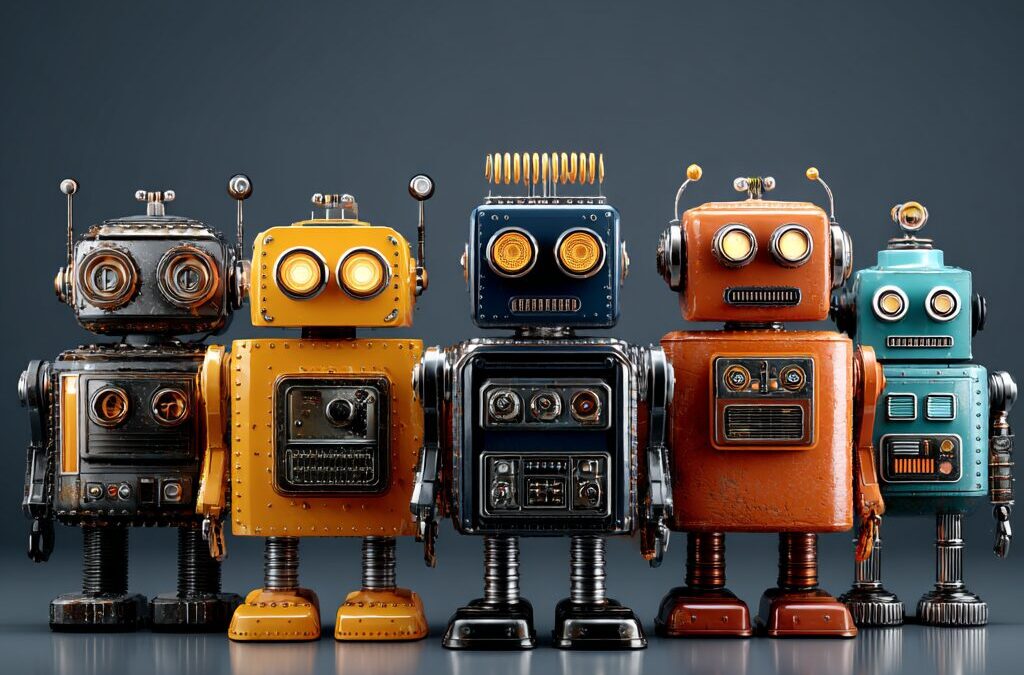Robot Swarms & Collective Intelligence: What Happens When Bots Think Together
Inspired by nature’s finest architects — ants, bees, and birds — robotics engineers are building swarms that move, learn, and build as one. This article explores how collective intelligence is reshaping robotics, from search-and-rescue missions to automated construction and planetary exploration.
🐜 The Birth of the Swarm
In nature, intelligence isn’t always centralized. Ant colonies coordinate without leaders, bee hives self-organize, and flocks of birds maneuver with perfect harmony — all without any single entity in charge.
This natural phenomenon, known as collective intelligence, has inspired one of the most exciting frontiers in modern robotics: swarm robotics.
Unlike traditional robots that operate in isolation, swarm robots are small, simple, and cooperative. They communicate locally, follow basic behavioral rules, and together achieve complex goals that no single unit could accomplish alone.
This shift — from individual to collective — mirrors a broader transformation in technology itself: decentralized, distributed systems replacing centralized control. Just as blockchain decentralizes finance, swarm robotics decentralizes intelligence.
Swarm Robotics: Unveiling the Future of Collective Intelligence
🤖 What Are Robot Swarms?
A robot swarm is a network of autonomous robots designed to coordinate their actions through simple communication protocols and shared objectives. Each robot acts on local information, but collectively they display emergent behavior — intelligent patterns that arise from simple interactions.
Key Traits of Swarm Systems:
-
Scalability: Performance increases with more robots.
-
Fault Tolerance: The swarm adapts when units fail or go offline.
-
Flexibility: Easily repurposed for new tasks or environments.
-
Self-Organization: Tasks and roles evolve dynamically.
In essence, swarm systems replace top-down control with bottom-up cooperation.
🧠 Collective Intelligence in Action
Swarm behavior is modeled using algorithms inspired by nature:
-
Ant Colony Optimization (ACO): Mimics ants finding shortest paths by laying down “pheromone trails” — used for routing, logistics, and exploration.
-
Boids Algorithm: Simulates flocking birds via three simple rules: alignment, cohesion, and separation.
-
Particle Swarm Optimization (PSO): Models social sharing of information to optimize problems in high-dimensional spaces.
When applied to robotics, these algorithms allow hundreds — even thousands — of robots to collaborate seamlessly, whether they’re drones flying in formation or ground bots mapping terrain.
⚙️ Real-World Applications
Swarm robotics is no longer a lab curiosity. It’s moving rapidly into real-world use cases that combine adaptability, efficiency, and scale.
1. Search & Rescue
Swarm drones can cover disaster zones, map collapsed buildings, and locate survivors faster than traditional teams. Because they’re distributed, the mission doesn’t fail if one drone crashes.
2. Agriculture
Robot swarms can monitor crop health, plant seeds, or distribute fertilizers with pinpoint precision — creating the foundation for autonomous, regenerative agriculture.
3. Construction & Manufacturing
Inspired by termite mounds, 3D-printing swarms collaborate to build structures autonomously — layer by layer — without centralized blueprints. Projects like Harvard’s TERMES and ETH Zurich’s Flying Swarm Builders have demonstrated multi-robot construction in both ground and aerial environments.
4. Environmental Monitoring
Marine and aerial swarms are being used to track pollution, monitor coral reefs, and map glaciers — providing continuous data streams where humans cannot easily go.
5. Space Exploration
NASA and ESA are exploring robotic swarms for lunar and Martian missions. Small, specialized bots could spread across alien terrain, collectively scouting resources, building habitats, or repairing infrastructure — the first extraterrestrial workforce.
🧩 The Technology Behind the Swarm
1. Communication Networks
Swarms rely on short-range, peer-to-peer communication — similar to a decentralized mesh network. Each unit sends and receives local updates (like position or status), allowing global patterns to emerge without a command center.
2. Sensor Fusion & Perception
Each robot carries sensors — LiDAR, vision cameras, ultrasonic — and uses AI models to perceive surroundings. Collective sensing creates a shared environmental model, improving accuracy beyond any single robot’s view.
3. Distributed AI
Modern swarms use on-device AI inference — often supported by edge computing or neuromorphic chips — to make split-second decisions. Some architectures employ federated learning, letting each bot learn locally while syncing global insights.
4. Blockchain & Coordination
In experimental designs, blockchain networks are used for coordination and auditability — ensuring transparent, tamper-proof task assignments, reputation systems, and swarm payments.
🔒 Security, Ethics & Failure Modes
While swarm robotics offers enormous promise, it also introduces new risks:
-
Emergent Chaos: Small code bugs can cascade into large-scale disorganization.
-
Swarm Hacking: Compromised nodes could manipulate collective behavior.
-
Unintended Consequences: Self-learning swarms could optimize in unexpected or unsafe ways.
Researchers are exploring “ethical governors” — AI oversight layers that enforce safe boundaries — and redundant fail-safes to maintain alignment with human objectives.
🧠 Lessons from Nature
In nature, no ant or bee understands the colony’s grand design — yet the system thrives. The lesson for robotics is profound: intelligence doesn’t need to be centralized to be effective.
Swarm robotics applies this principle to technology, offering resilience and adaptability in unpredictable environments. Whether mapping forests, cleaning oceans, or exploring other planets, swarms prove that intelligence can emerge from interaction.
🌍 The Future: Human-Swarm Collaboration
The next frontier is hybrid intelligence — humans and robot swarms working side-by-side.
Imagine architects designing blueprints that autonomous construction swarms bring to life, or environmental scientists deploying drone collectives to rebuild ecosystems.
As human intent merges with machine coordination, we move closer to a world of collaborative autonomy — where humans guide the “why,” and swarms determine the “how.”
🔮 Beyond Robotics: A New Paradigm of Systems Thinking
Swarm intelligence is more than a robotics breakthrough — it’s a metaphor for the 21st-century world. From decentralized finance to collective decision-making, systems everywhere are becoming distributed, emergent, and adaptive.
Just as the internet connected people, swarm systems connect intelligence itself — paving the way for a future where coordination is not commanded, but cultivated.
🔑 Key Takeaways
-
Swarm robotics uses collective intelligence inspired by nature for scalable, adaptive systems.
-
Real-world uses include construction, agriculture, search & rescue, and space exploration.
-
Emerging technologies like AI, blockchain, and edge computing enhance swarm coordination.
-
Ethical and safety frameworks are vital to guide swarm autonomy.
-
The long-term vision: human-swarm collaboration driving global innovation.
Crypto Rich ($RICH) CA: GfTtq35nXTBkKLrt1o6JtrN5gxxtzCeNqQpAFG7JiBq2
CryptoRich.io is a hub for bold crypto insights, high-conviction altcoin picks, and market-defying trading strategies – built for traders who don’t just ride the wave, but create it. It’s where meme culture meets smart money.



